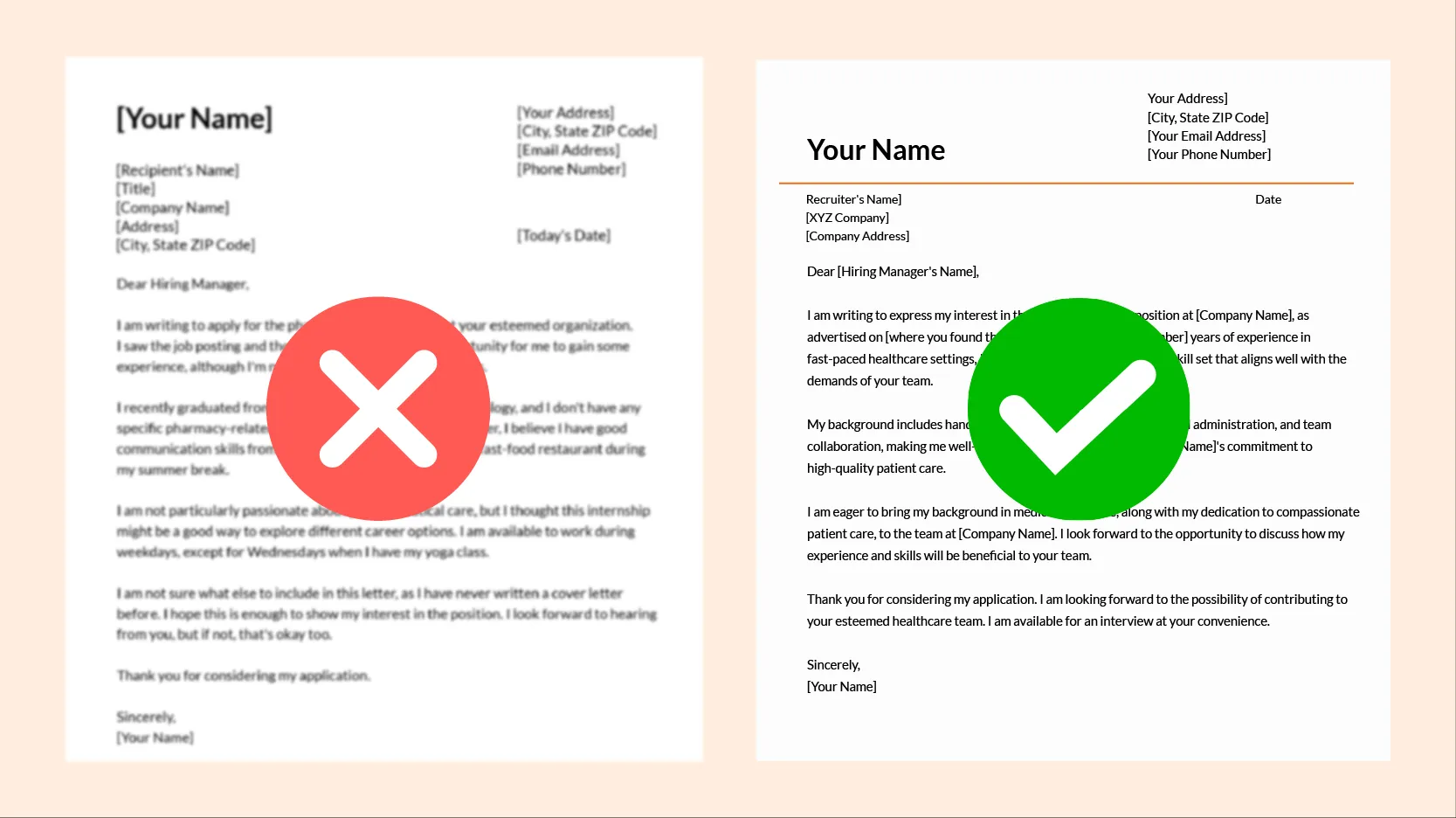Crafting the Perfect Medical Assistant Cover Letter
A well-crafted cover letter is your first opportunity to make a positive impression on a potential employer. For a medical assistant, a compelling cover letter not only highlights your skills and experience but also demonstrates your passion for patient care and your understanding of the healthcare environment. This guide provides a step-by-step approach to creating a cover letter that stands out and increases your chances of landing an interview. We’ll cover everything from essential elements to formatting tips and examples, ensuring you’re well-equipped to showcase your qualifications effectively. Remember, your cover letter is a crucial part of your application, so taking the time to get it right can significantly impact your job search success.
Understanding the Purpose of a Cover Letter
The primary purpose of a cover letter is to introduce yourself to the hiring manager and to express your interest in the medical assistant position. It’s a chance to expand on the information in your resume and to provide context for your skills and experiences. Unlike a resume, which presents a summary of your qualifications, a cover letter allows you to tell your story, explaining why you’re a great fit for the role and the organization. It allows you to connect your skills, experiences, and aspirations with the specific requirements of the job, demonstrating your understanding of the role and your enthusiasm for the opportunity. The cover letter is your chance to differentiate yourself from other applicants by highlighting your unique value proposition and showcasing your personality.
Key Elements to Include
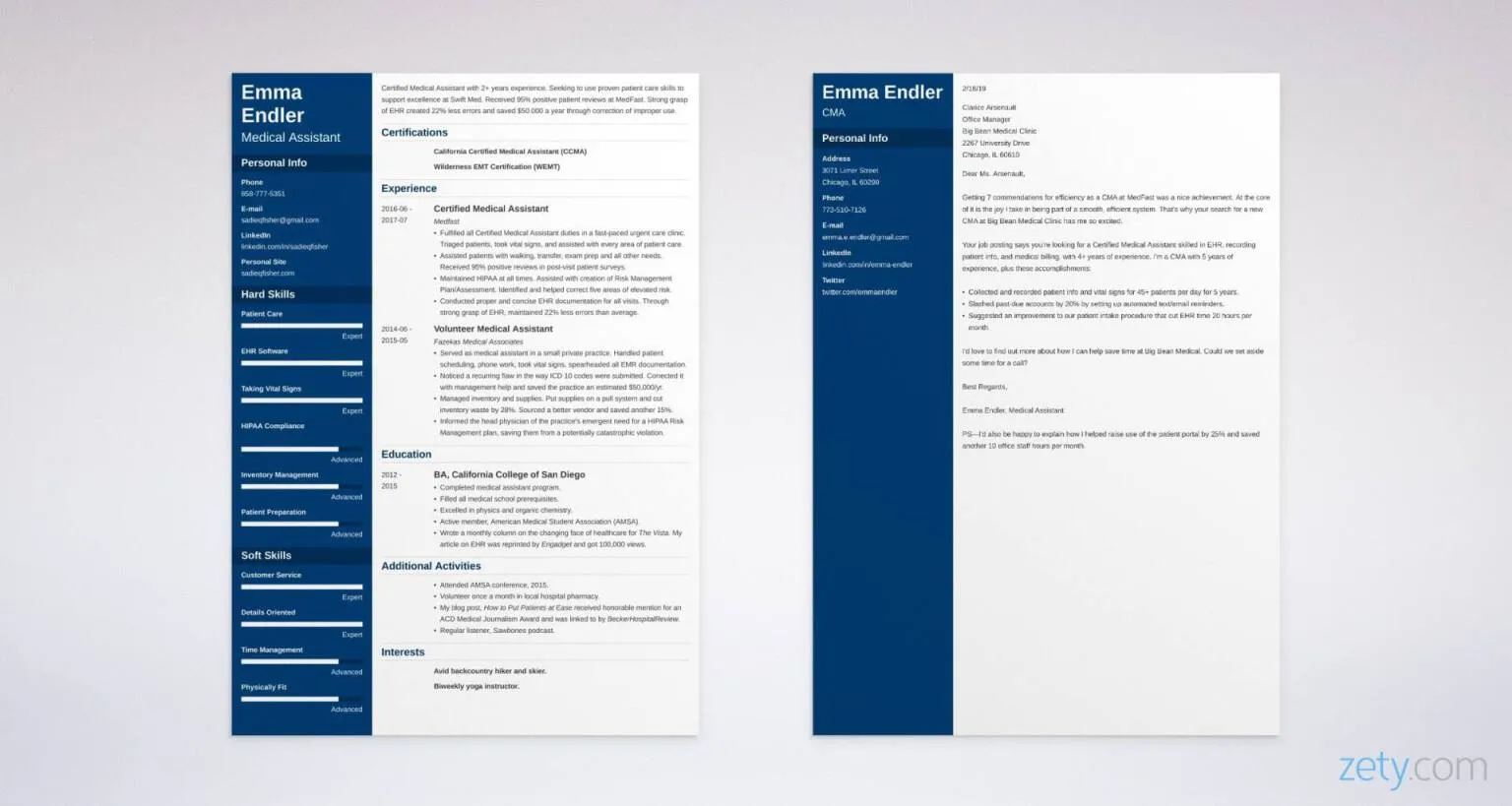
A strong medical assistant cover letter includes several key elements. These elements, when combined, present a clear and concise picture of your qualifications and your interest in the position. Each section should be carefully written to showcase your strengths and to align with the requirements of the job. Accuracy and attention to detail are paramount in all these sections, as they reflect your professionalism and your commitment to providing quality patient care.
Your Contact Information
Start with your full name, address, phone number, and email address at the top of the letter. Ensure your email address is professional. This makes it easy for the hiring manager to contact you.
The Date
Include the date you are writing the letter. This helps establish when the application was submitted.
Hiring Manager’s Information
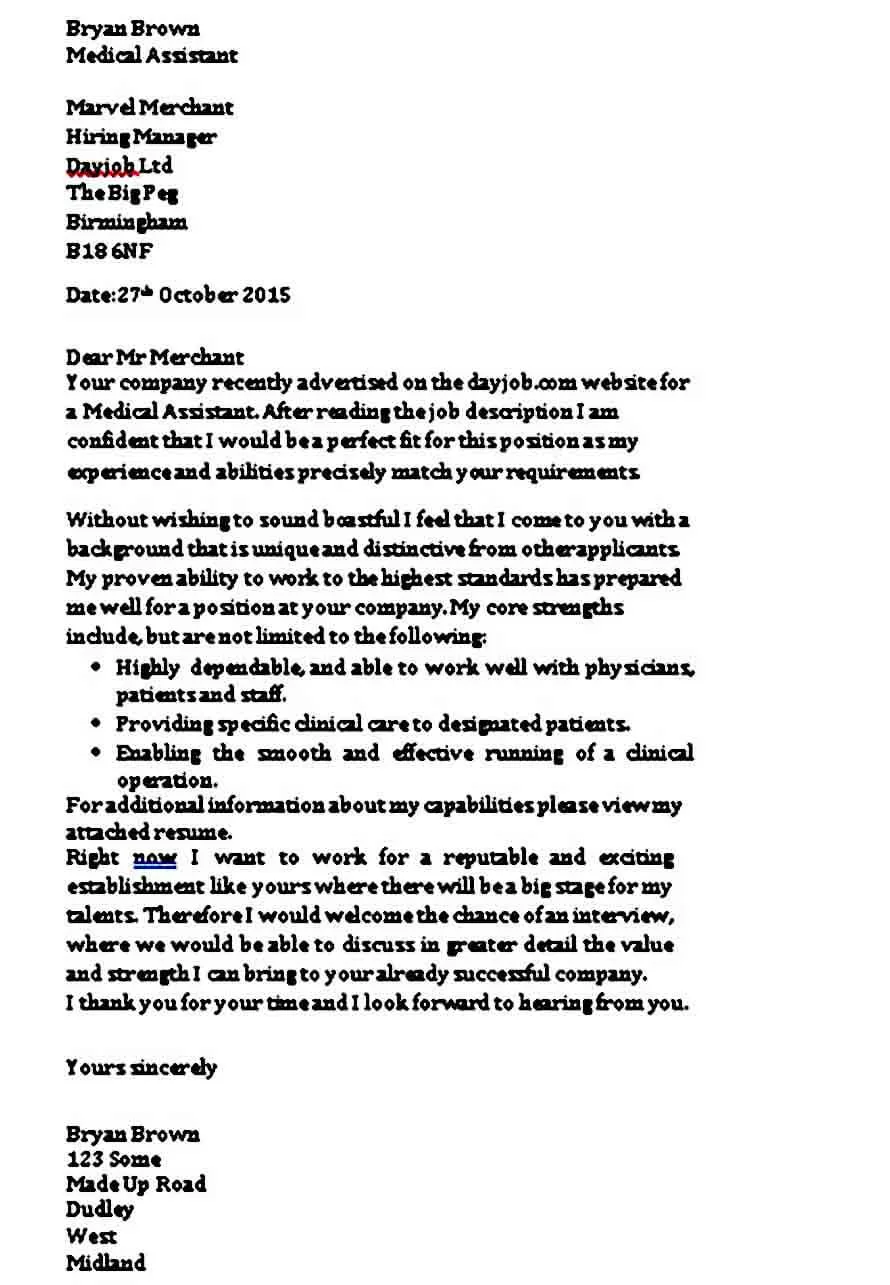
If possible, address the letter to a specific person (e.g., the hiring manager or the practice manager). Research the clinic or hospital website or LinkedIn to find out their name and title. If you cannot find a specific person, you may use a general greeting such as “Dear Hiring Manager”.
The Salutation
Use a professional salutation. “Dear Mr./Ms./Mx. [Last Name]” is appropriate. If you don’t know the hiring manager’s name, use “Dear Hiring Manager” or “To Whom It May Concern”.
Highlighting Your Skills and Experience
The body of your cover letter is where you showcase your skills and experience. This section should be tailored to the specific job description. Emphasize the skills and experiences that align with the job requirements. Don’t just list your skills; provide specific examples of how you’ve used those skills to achieve results. This is your opportunity to demonstrate why you are the best candidate for the role. Focus on the most relevant skills and experiences, and make sure to align them with the job description.
Showcasing Relevant Skills
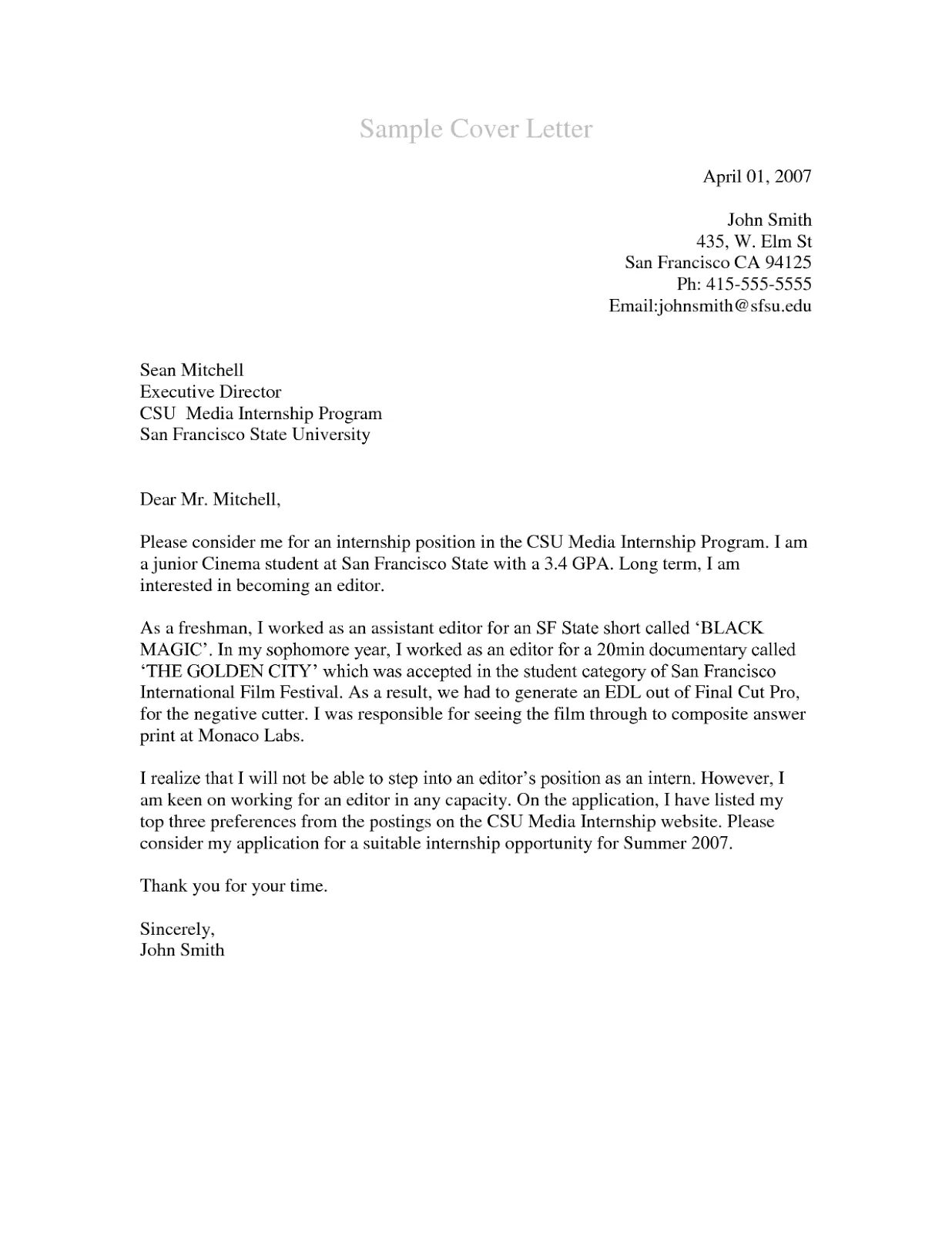
Highlight your clinical skills, such as taking patient histories, measuring vital signs, assisting with examinations, and administering medications. Also, emphasize your soft skills, such as communication, empathy, and problem-solving. These skills are crucial in a medical environment. Include specific examples to illustrate how you’ve used these skills in the past.
Quantifying Your Achievements
Whenever possible, quantify your achievements. Instead of saying “Improved patient satisfaction,” say “Increased patient satisfaction scores by 15% through improved communication.” Providing numbers adds credibility to your claims and demonstrates the impact you’ve made in previous roles. Use numbers to demonstrate the scope of your achievements. This makes your letter more compelling and demonstrates your value.
Tailoring Your Letter to the Job
Customize your cover letter for each job application. Do not use a generic template. Carefully review the job description and identify the key requirements. Then, use your cover letter to show how your skills and experience align with those requirements. By tailoring your letter, you show the hiring manager that you are genuinely interested in the specific role and have taken the time to understand what they are looking for. This also increases your chances of being selected for an interview.
Researching the Clinic/Hospital
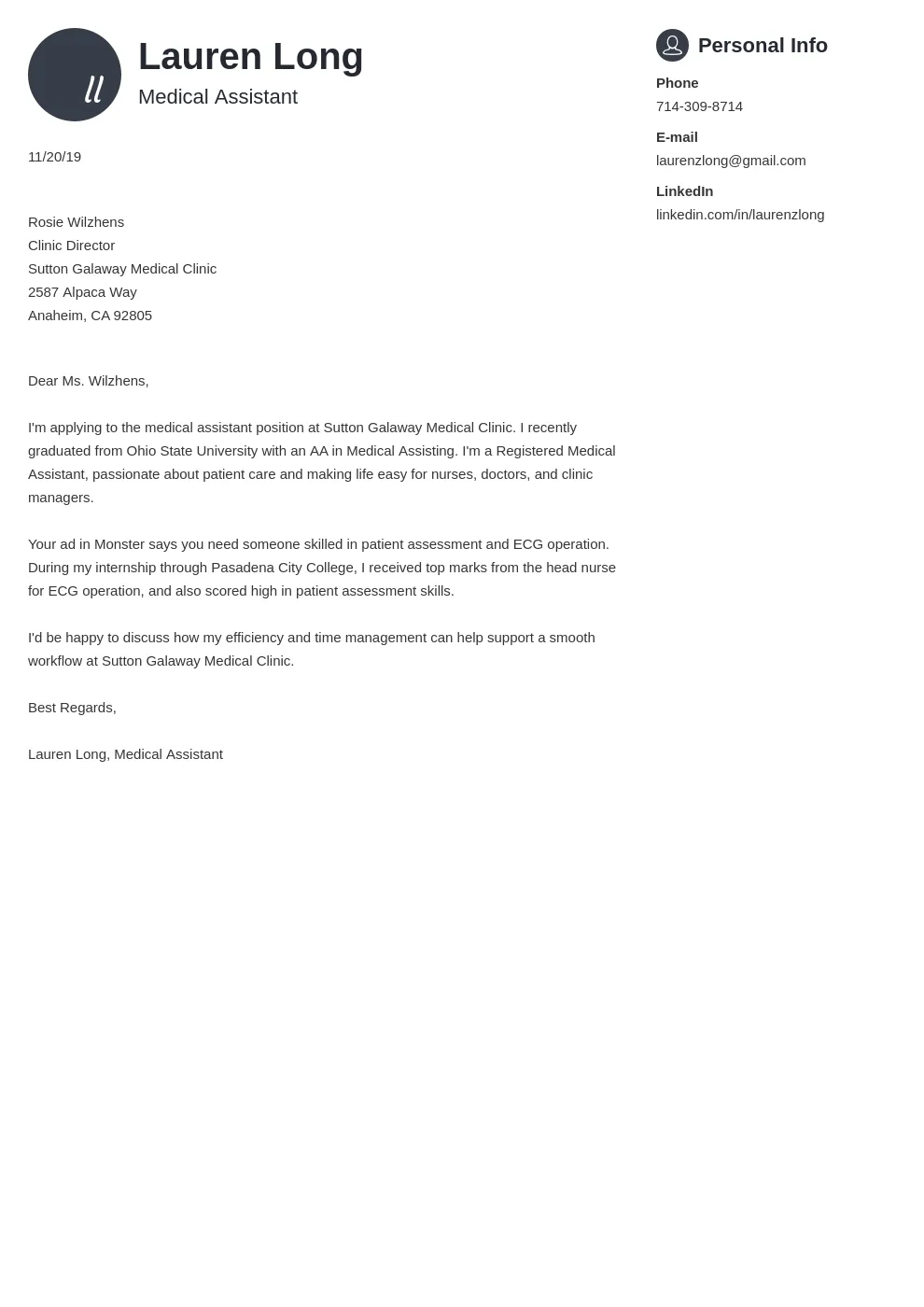
Research the clinic or hospital where you are applying. Understand their mission, values, and the types of patients they serve. This information will help you tailor your letter to demonstrate your understanding of their specific needs. Mentioning something specific about the organization shows that you are genuinely interested in working there. Show your knowledge and interest in their specific services and patient focus.
Matching Skills to Job Requirements
Carefully review the job description and identify the key skills and qualifications the employer is seeking. In your cover letter, explicitly address how your skills and experience meet those requirements. Provide specific examples that demonstrate your ability to perform the tasks outlined in the job description. Use keywords from the job description to show that you’re a good match.
Writing a Compelling Closing
The closing of your cover letter is your final opportunity to make a positive impression. It’s where you express your enthusiasm for the position and reiterate your interest in the opportunity. A strong closing should be professional, enthusiastic, and include a clear call to action.
Expressing Enthusiasm and Interest
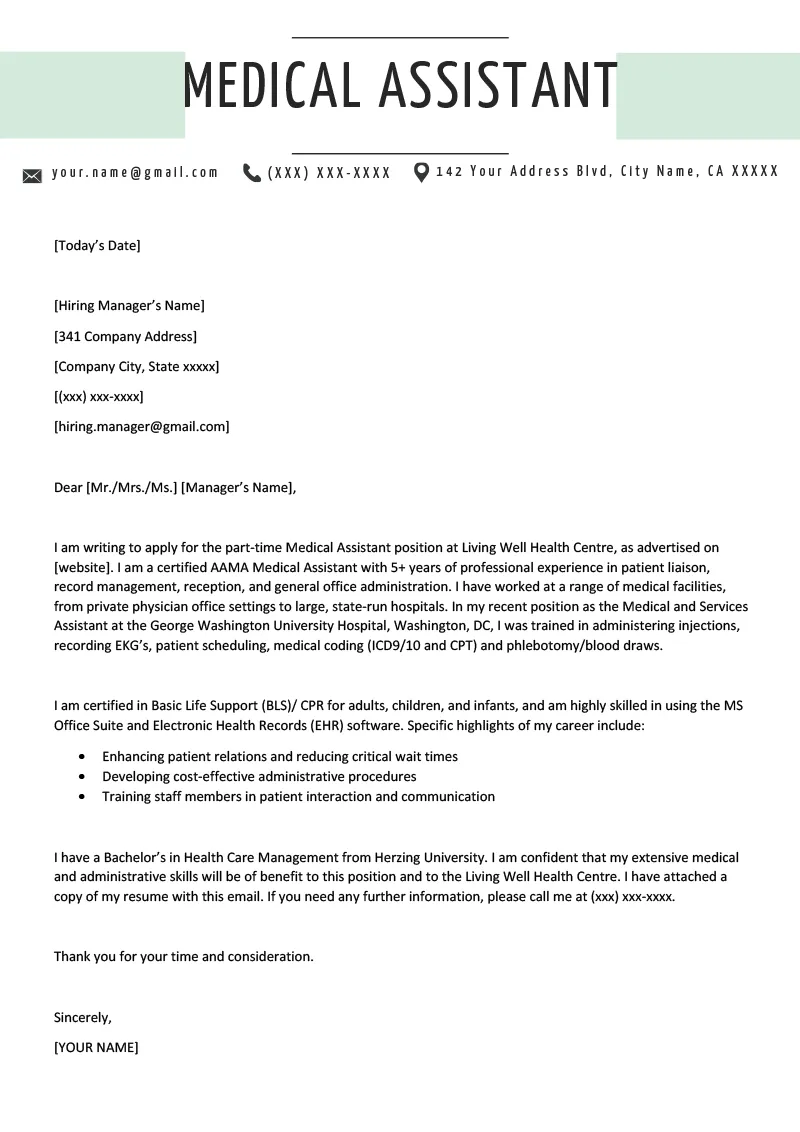
Reiterate your enthusiasm for the position and the organization. Mention what excites you about the role and why you are a good fit. Show genuine interest in the opportunity. Emphasize your desire to contribute to the clinic/hospital’s mission and values. Expressing your genuine excitement helps the hiring manager see your passion for the medical field.
Call to Action
Include a clear call to action. State that you are available for an interview and provide your contact information once more. Thank the hiring manager for their time and consideration. Be polite and professional. A clear call to action makes it easy for the hiring manager to move forward in the hiring process and increases your chances of being contacted.
Formatting and Proofreading
A well-formatted and error-free cover letter demonstrates your attention to detail and professionalism. Ensure your letter is easy to read and free of any grammatical errors or typos. Poor formatting or errors can negatively impact your application, regardless of your qualifications. A polished cover letter is a reflection of your commitment to excellence.
Font and Formatting Guidelines
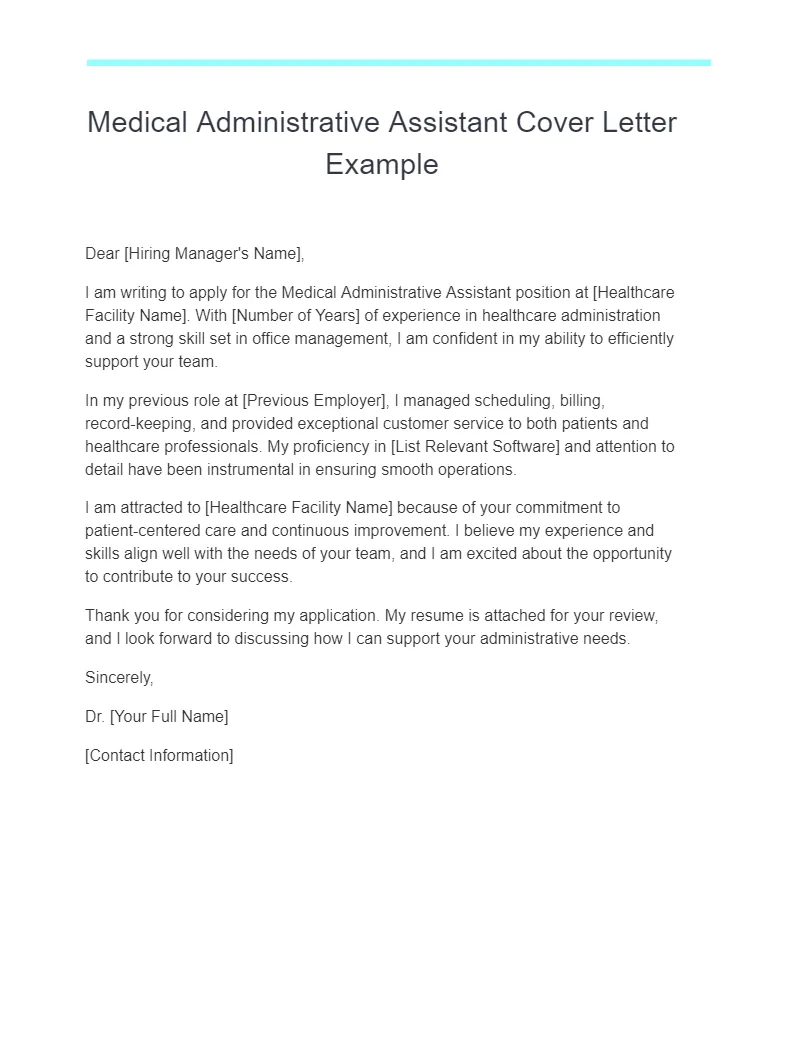
Use a professional font such as Times New Roman, Arial, or Calibri. Maintain a consistent font size (10-12 points). Use standard margins (1 inch on all sides). Keep the letter concise, ideally one page in length. Proper formatting makes your letter easy to read and professional in appearance. Ensure consistent spacing throughout your letter.
Proofreading for Errors
Proofread your cover letter carefully for any grammatical errors, typos, or inconsistencies. Use spell-check and grammar-check tools, but don’t rely on them entirely. Have a friend or family member review your letter for a fresh perspective. Errors can detract from your message and make you appear unprofessional. Always proofread your letter several times.
Medical Assistant Cover Letter Examples
Examples of cover letters can provide valuable guidance when writing your own. These examples offer insights into how to structure your letter, highlight your skills, and tailor your message to different situations. Tailoring these examples can give you a starting point.
Example 1 Entry-Level Medical Assistant
This example will focus on a recent graduate or someone with limited experience. The focus here is on skills learned during education and any volunteer experience. Emphasize transferable skills like communication, organization, and eagerness to learn. It’s important to highlight any certifications or clinical rotations completed.
Example 2 Experienced Medical Assistant
This example will focus on highlighting professional experiences and accomplishments. Include specific details about the number of patients assisted, procedures performed, and positive outcomes achieved. Quantify achievements and emphasize how your previous roles align with the requirements of the new position.
Example 3 Medical Assistant with Specialization
For those with specialized training (e.g., phlebotomy, EKG, etc.), make sure your cover letter clearly outlines these specific skills and qualifications. Highlight the unique value you bring to the team and how your specialization can benefit the clinic or hospital. Provide any certification information as well.
Common Mistakes to Avoid
Avoiding common mistakes can significantly improve the quality of your cover letter and increase your chances of success. Being aware of these pitfalls allows you to create a more effective and professional document.
Generic Cover Letters
Sending a generic cover letter that is not tailored to the specific job or company is a major mistake. Generic letters lack relevance and show a lack of interest in the position. Always customize your cover letter for each job application. Tailor the content to match the job description. Demonstrate your understanding of the company’s needs and values.
Typos and Grammatical Errors
Typos and grammatical errors can undermine your credibility and professionalism. Carefully proofread your cover letter before submitting it. Use spell-check and grammar-check tools. Have someone else review your letter as well. Errors make you appear careless. Take the time to ensure your letter is perfect.
Ignoring the Job Description
Failing to address the specific requirements outlined in the job description is a missed opportunity. Focus on the key skills and qualifications the employer is seeking. Show how your skills and experience align with the job requirements. Using keywords from the job description can improve your chances. Make it clear how your qualifications match their needs.
Conclusion
Creating a compelling medical assistant cover letter is essential for making a positive first impression and securing an interview. By understanding the key elements, tailoring your letter to each job, and avoiding common mistakes, you can significantly increase your chances of success. Remember to showcase your skills, quantify your achievements, and express your enthusiasm for the opportunity. Take the time to craft a well-written, professional cover letter, and you’ll be well on your way to landing your dream job as a medical assistant. Good luck with your job search!
